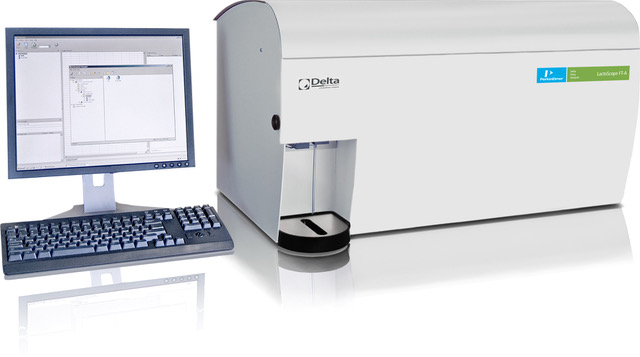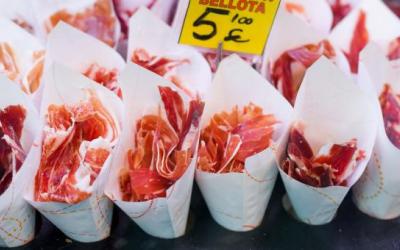USDA predicts meat, milk and egg prices to rise in 2025

USDA forecasts are based on two key indicators: the Consumer Price Index, which measures changes in the price consumers pay for food , and the Producer Price Index, which measures wholesale price movements. Understanding these trends helps consumers plan their spending and helps businesses anticipate market shifts.
Grocery Retail Price Rise
The Consumer Price Index for food has been rising, and the USDA expects that trend to continue in 2025. Prices for MEAT , poultry, dairy, and eggs are expected to rise , with some categories seeing larger increases.
Experts expect beef and veal prices to rise due to a combination of factors, including higher feed costs, drought-affected livestock supplies, and increased market demand. While price increases were modest in 2024 , USDA expects prices to rise more sharply in 2025 as supply tightness continues. Consumers may need to adjust their purchasing habits to cheaper cuts or alternative protein sources. Pork
prices are expected to rise more slowly, according to USDA analysts. The pork industry has seen some declines in feed costs, while production volumes have remained stable. However, rising transportation and processing costs may result in retail prices rising slightly as the year progresses. However, pork remains a relatively affordable meat product. Poultry
prices are also expected to rise, although the increase will not be as steep as that of beef. The industry faces significant challenges, including rising feed costs and labor shortages. Producers are trying to maintain supply, but production costs are rising, and consumers will likely pay for the increase. Chicken , which is considered an affordable source of protein, will likely remain a cheaper alternative to red meat, but consumers should expect some price increases. Dairy products, including MILK , cheese and butter , will also become more expensive in 2025, experts believe. Dairy farmers face rising feed and labor costs, which in turn leads to higher retail prices. In addition, instability in global demand for dairy products and supply chain disruptions may contribute to increased price volatility.
Dairy households may have to adjust their spending as prices rise. Egg prices have been highly volatile in recent years, and USDA expects that trend to continue this year. The poultry industry has been impacted by factors including disease outbreaks, logistical challenges, and rising production costs. Egg prices may not fluctuate as much as in previous years, but prices will still be high. Consumers may notice occasional price spikes, especially during peak demand times, such as the holidays.
Higher Costs for Farmers and Suppliers
The Producer Price Index, which measures wholesale price movements and production costs, is also projected to rise in 2025. Higher production costs impact farmers, livestock owners, and food producers, ultimately passing through to consumer prices. The meat industry , particularly beef production, is seeing rising costs at varying levels. Drought in key cattle -producing regions has reduced herds, increasing the cost of raising cattle.
Feed prices also remain high, increasing overall production costs. All of these factors are contributing to higher retail prices. Pork producers are facing fluctuating feed prices, although overall production volumes in the industry are relatively stable. However, increased transportation, labor, and processing costs may push up wholesale prices, which will inevitably impact the meat market. The poultry industry is seeing rising feed, labor, and biosecurity costs.
Outbreaks of diseases, including avian influenza, have caused periodic supply disruptions. Production costs are rising, which in turn is driving up wholesale and retail prices. Dairy farmers are also facing rising costs, including feed, energy, and labor. In addition, fluctuations in global demand for milk and dairy products and supply chain issues are impacting price trends. Higher production costs will likely be passed on to consumers, with dairy products becoming more expensive. Egg producers have been hit hard by rising feed costs and disease outbreaks. The poultry industry is taking steps to combat bird flu and other diseases, but these efforts are not cheap. Egg prices may not be rising as much, but production costs remain high, with wholesale and retail prices above pre-pandemic levels.
A tough year for food prices
According to the USDA forecast, retail and wholesale prices for food products will continue to rise in 2025, primarily for meat, dairy products, and eggs. Prices for pork and chicken may not increase as significantly, but beef , veal, and dairy products are likely to increase significantly. The dynamics of egg prices, despite relative stabilization, are almost impossible to predict.
For consumers, this means increased food costs and the need to plan their spending accordingly. Consumers may seek more cost-effective alternatives for their family budget, such as buying in bulk, switching to less expensive meats, or including plant-based proteins in their diet.
For producers, rising costs make it increasingly difficult to maintain profitability. Farmers and suppliers must consider factors such as rising feed, labor, and logistics costs while ensuring that market demand is met.
Overall, 2025 will be another year of rising food prices, so it is vital for both consumers and producers to stay informed and adapt to changing market conditions.
Read together with it:
- Belstat reported how much grain, milk, meat, and vegetables are produced in Belarus per capita.November 14, MINSK . Belarus produces 913 kg of grain, 958 kg of MILK, 341 kg of potatoes, and 304 kg of vegetables per capita, according to a review by the National Statistical Committee for the Day of Agricultural and Processing Industry Workers, BELTA reports. The country also produces 78 kg of fruits and berries, 147 kg of livestock and poultry (slaughter weight), and 4......
- The IEA sees a risk of a decline in oil production in Russia due to sanctions.The IEA sees a risk of reduced oil production in RUSSIA due to US sanctions , but maintains its production forecast. According to the IEA, Russian oil exports will remain unchanged.There is a "significant downside risk" to Russia's oil production forecast due to US sanctions, the International Energy Agency (IEA) said in a report.BLOOMBERG . The agency's experts believe that the latest US sanction...
- UniCredit заявил о галактических усилиях из-за санкций против РоссииUniCredit старается не нарушить «более 15 тыс. санкций», а также не «совершать ошибки», которые позволят изъять его активы в России, заявил гендиректор. После начала военной операции банк начал рассматривать возможность ухода Итальянский банк UniCredit прилагает «галактические усилия», пытаясь соблюсти международные санкции в отношении своего российского подразделения. Об этом заявил генеральный д...
- He crawled to the icon with prayer. The true story of a man who overcame drug addiction.Alexander Ovchinnikov. Topic News. Our project's hero was a drug addict for many years. The thought that this was a dead end never left him, but his addiction proved stronger. One day, when he could no longer walk, he crawled to an icon in prayer. This became his first step toward a new life. Today, he heads a charity center that helps those who have given up hope and are unable to quit ALCOHOL an...
- Низкое предложение и устойчивый спрос: в Аргентине растут цены на мясоЦены на говядину снова выросли, что отразилось на полках супермаркетов и в мясных магазинах. За последние две недели розничные цены выросли на 8–12%, а на некоторые популярные отрубы рост превысил 15% по сравнению с октябрем. Тем не менее, продажи остаются высокими: потребители продолжают покупать, принимая новые цены и закрепляя тенденцию, которая повторяется каждый год в конце года, когда спрос ...


























































